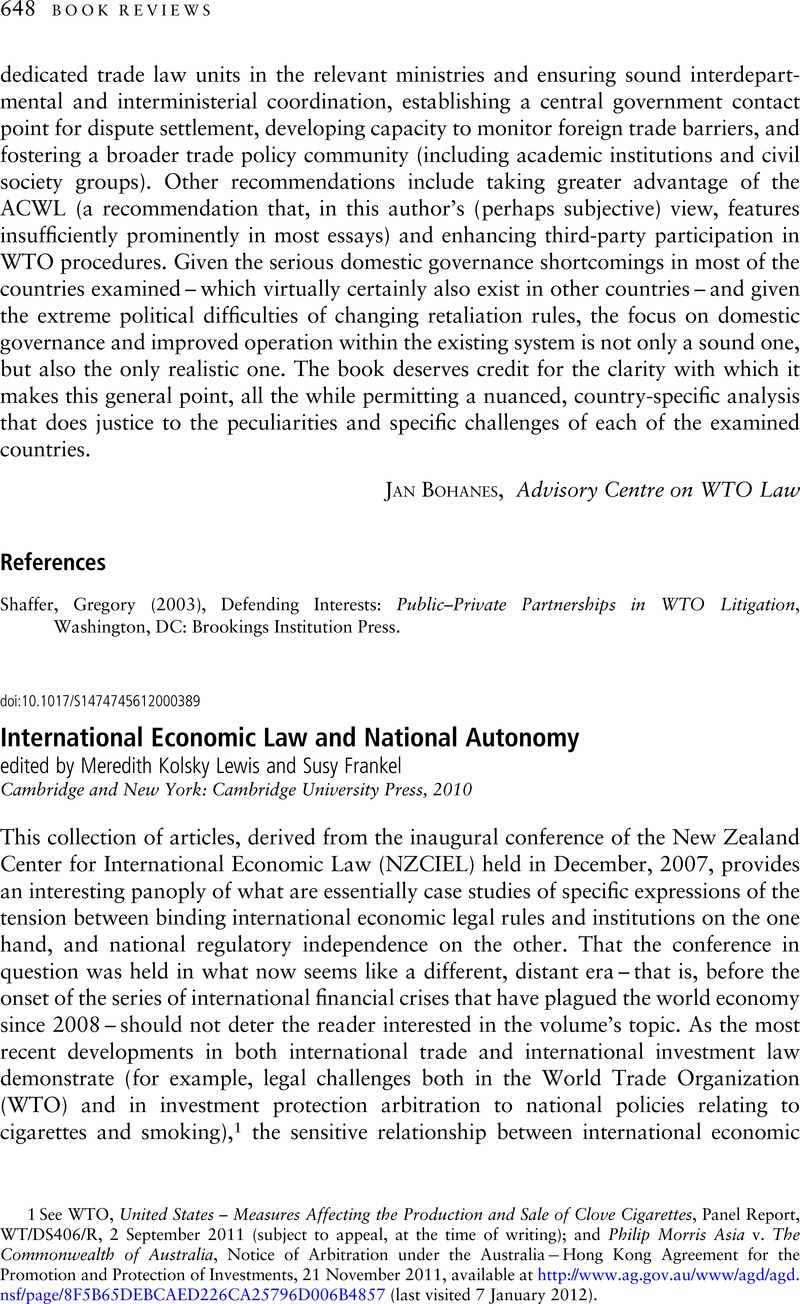No CrossRef data available.
Published online by Cambridge University Press: 30 October 2012

1 See WTO, United States – Measures Affecting the Production and Sale of Clove Cigarettes, Panel Report, WT/DS406/R, 2 September 2011 (subject to appeal, at the time of writing); and Philip Morris Asia v. The Commonwealth of Australia, Notice of Arbitration under the Australia − Hong Kong Agreement for the Promotion and Protection of Investments, 21 November 2011, available at http://www.ag.gov.au/www/agd/agd.nsf/page/8F5B65DEBCAED226CA25796D006B4857 (last visited 7 January 2012).
2 See, e.g., Tariq Banuri and Juliet B. Schor (eds.), Financial Openness and National Autonomy − Opportunities and Constraints (Oxford: Oxford University Press, 1992); and Daniel K. Tarullo, Banking on Basel: The Future of International Financial Regulation (Washington, DC: Peterson Institute for International Economics, 2008), Chapter 6.
3 Hannum, Hurst and Lillich, Richard B., ‘The Concept of Autonomy in International Law’, American Journal of International Law, 74(4) (1980): 858CrossRefGoogle Scholar, at 860 (emphasis added). See also Lapidoth, Ruth, Autonomy: Flexible Solutions to Ethnic Conflicts (Washington, DC: United States Institute of Peace Press, 1996)Google Scholar.
4 See fn. 1supra.
5 But see Tracey Epps’ contribution, ‘Demanding Perfection: Private Food Standards and the SPS Agreement’, pp. 73 − 98. Epps notes that space limitations prevent her from analyzing the question of private food standards in terms of technical barriers to trade.
6 See the contributions by Rafael Leal-Arcas and Jane Kelsey.
7 See Mattoo, Aaditya and Sauvé, Pierre (eds.), Domestic Regulation and Service Trade Liberalization (Washington, DC: The World Bank, 2003)Google Scholar.
8 Howse, Aaditya Robert, ‘The End of the Globalization Debate: A Review Essay’, Harvard Law Review, 121 (2008): 1528.Google Scholar
9 International Economic Law and Policy Blog, Tomer Broude, ‘Live Blog: Reform, Regulation and the Stationary Bicycle Theory’, 30 November 2009, http://worldtradelaw.typepad.com/ielpblog/2009/11/live-blog-reform-regulation-and-the-stationary-bicycle-theory.html (last visited 1 December 2012).